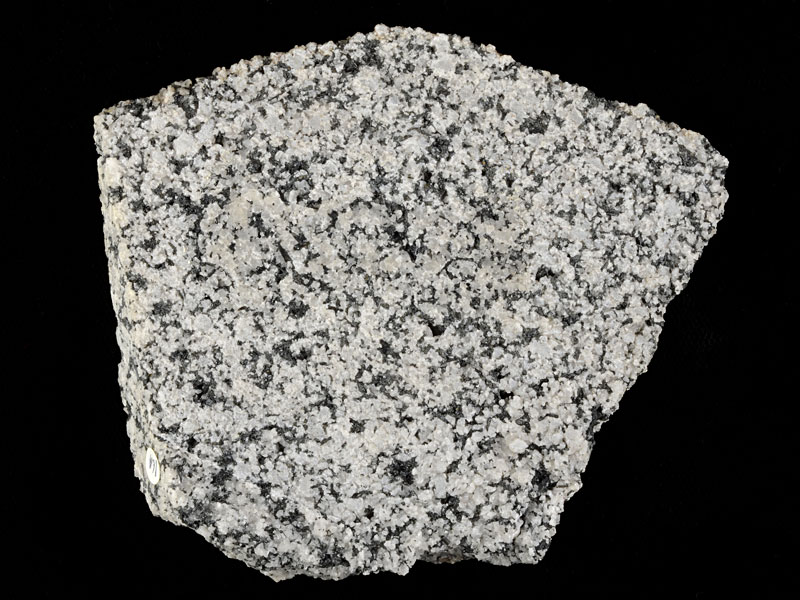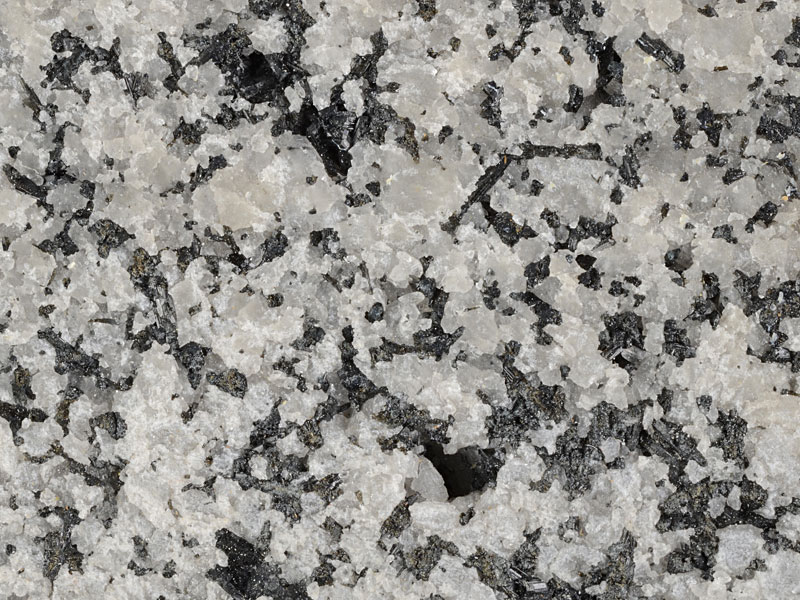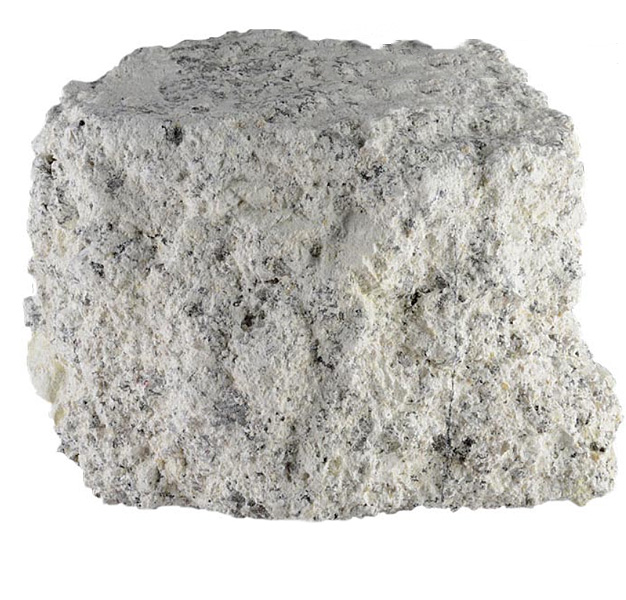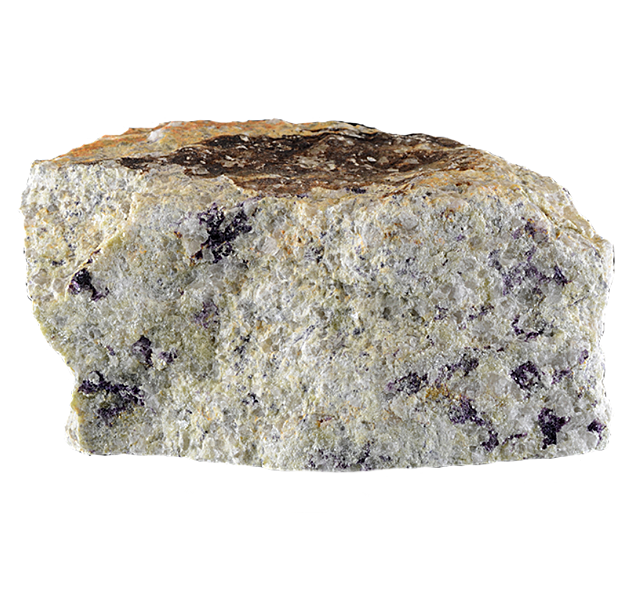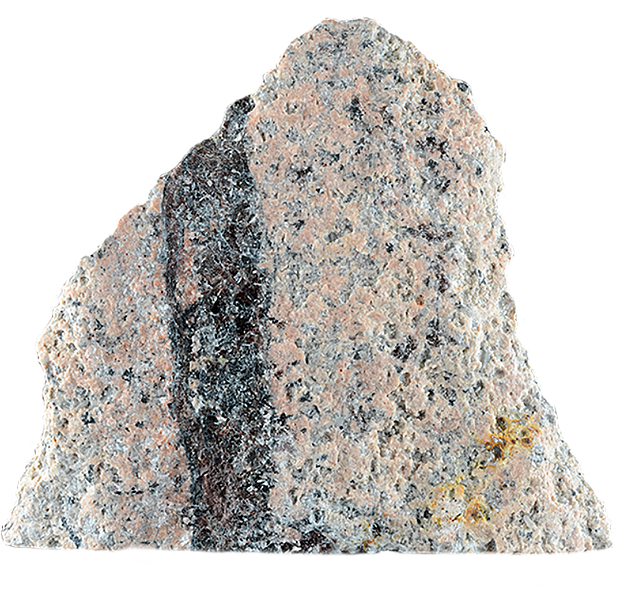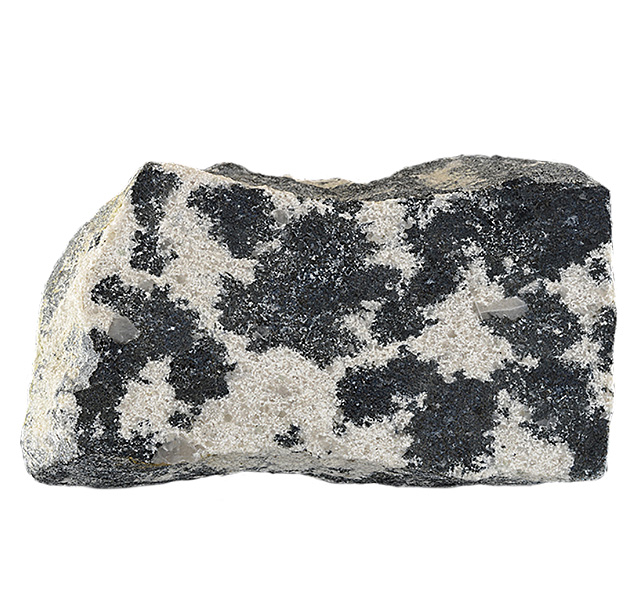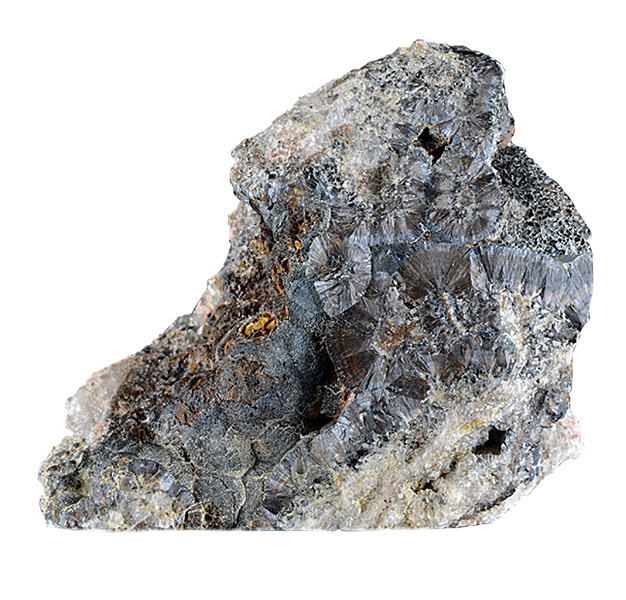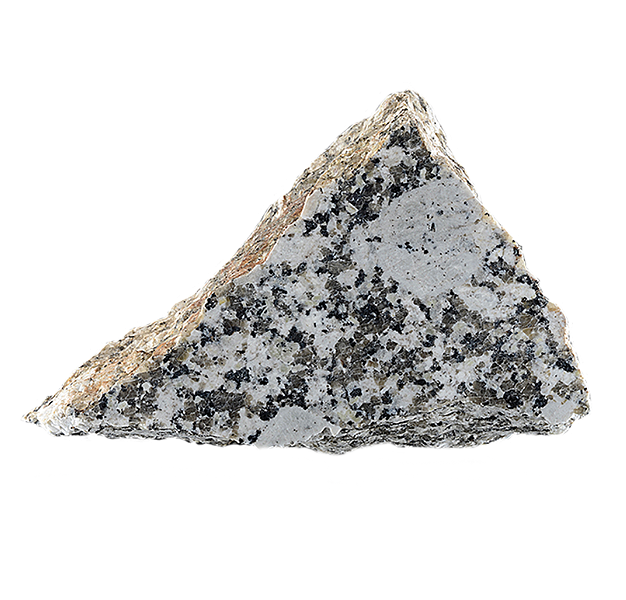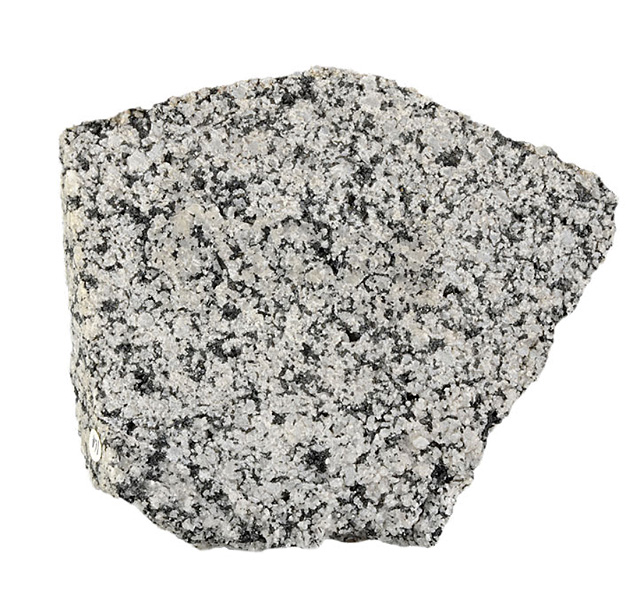
Fact sheet
This sample is an excellent example of a prominent outcrop of quartz ‘schorl’ rock from Roche, close to the town of St Austell. The outcrop is part of the northern flank of the St Austell granite. Schorl is the species name for sodium-iron tourmaline commonly found in certain types of granitic rock. It may represent the roof of the magma chamber. The outcrop consists of numerous interleaved pegmatite sheets and many cavities filled with quartz, tourmaline, zinnwaldite and topaz.
The thin section consists of just two minerals; elongate and stubby tourmaline grains exhibiting blue/pale brown pleochroism and second order birefringence colours; and large plates of underformed quartz, exhibiting first order birefringence colours and high concentrations of solid and fluid inclusions that make them appear dusty.
A case study of the St Austell granite complex in Cornwall, England, illustrating the range of rocks associated with a granite intrusion. The earliest part of the complex is a siderophyllite (biotite) granite containing muscovite and tourmaline typical of a SW England granite, with many primary magmatic features.
This early intrusion was followed by the intrusion of an evolved volatile-rich magma which was the driving force behind a series of intense hydrothermal processes as volatiles escaped from this magma and helped to establish an extensive alteration halo (aureole). Boron, fluorine and lithium (as well as water) played major roles in the formation of the second intrusion and in the associated hydrothermal processes. Igneous activity lasted around 18 million years from 282 Ma (siderophyllite granite) to 265 Ma (fluorite granite).
